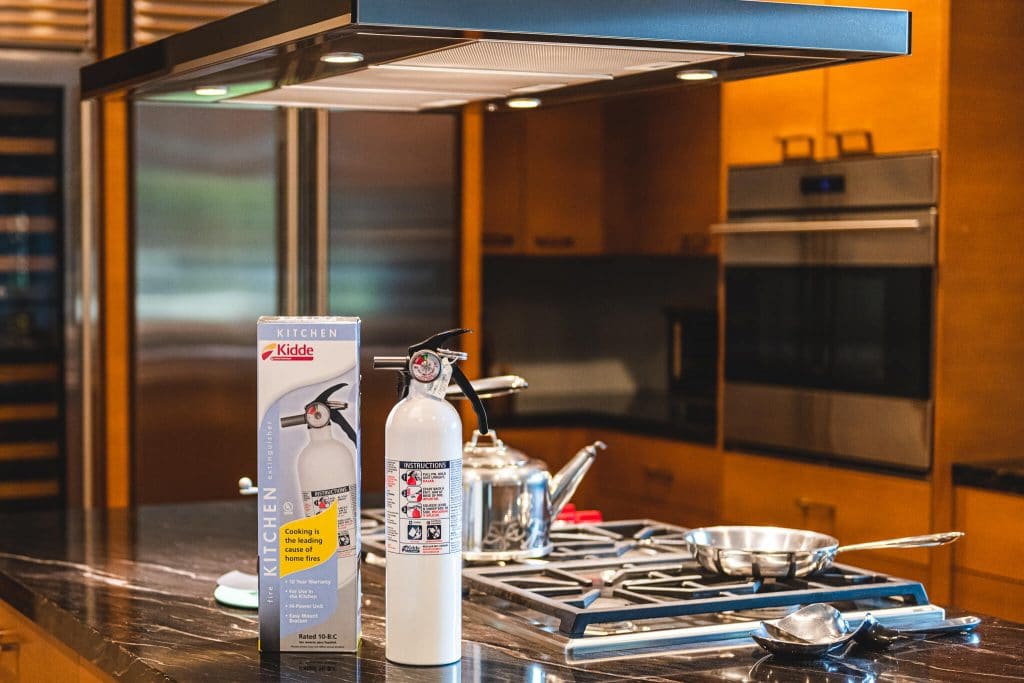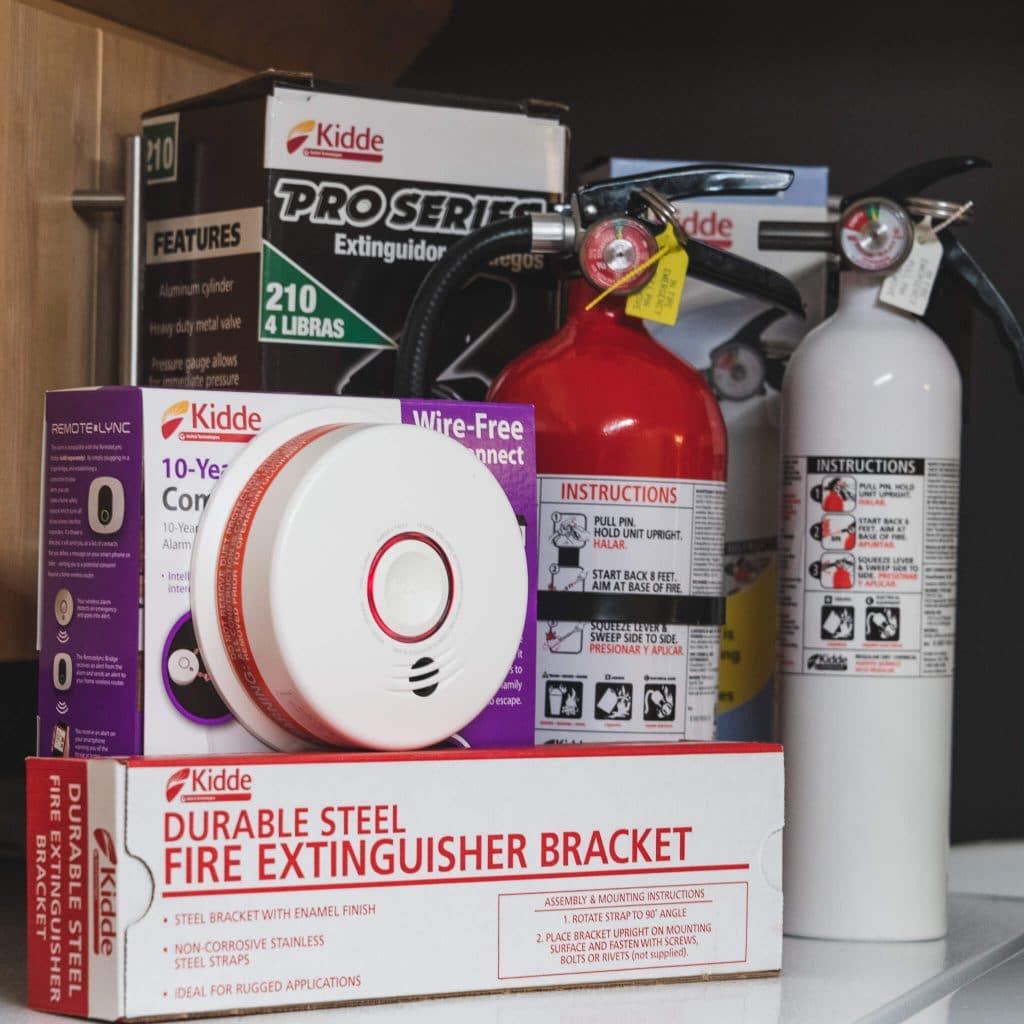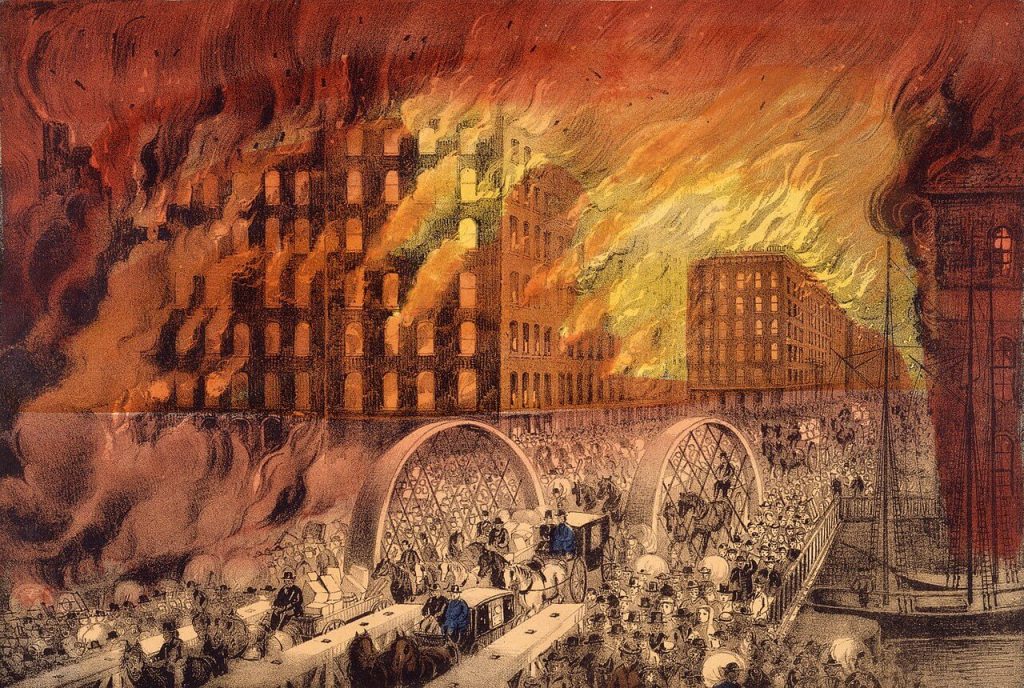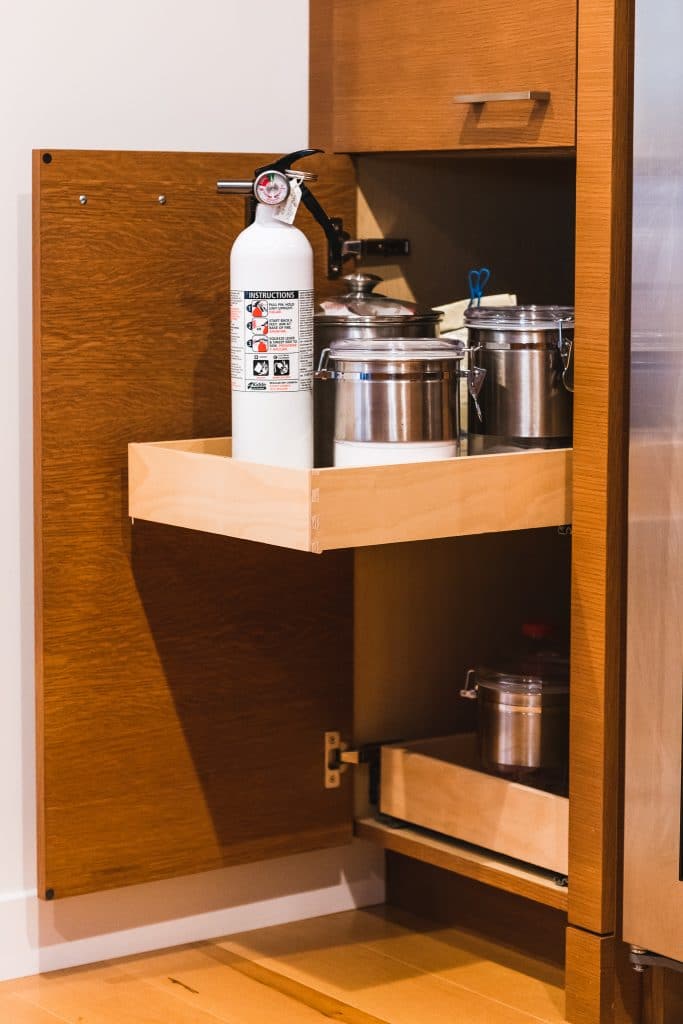An often overlooked, yet essential part of cooking, is fire safety in the kitchen. As a foodie and rather rambunctious home cook, I spend a lot of time in the kitchen. My fellow home cooks like to geek out about different kitchen tools and devices, such as knives. While it’s important to use them with caution, knives are not the greatest hazard in kitchens across the world.
The thing that poses more of a threat than any sharp blade is unequivocally fire. A single unattended flame or loose spark can lead to disastrous ends, potentially destroying entire homes and endangering the lives of all those inside.

Fire safety is an underrated, rarely thought about topic and one which any home cook should be prepared for. October is National Fire Prevention Month, so I’m hoping this fire safety guide for the kitchen will light a fire under your feet and ensure your kitchen is protected.
Disclosure:
This post was sponsored by Kidde Fire Safety as part of an Influencer Activation for Influence Central and all opinions expressed in my post are my own.
The folks over at Kidde (you know, with the fire extinguishers and smoke alarms) hate burned food almost as much as I do, so they sponsored this entire article. You can find Kidde products in store at Walmart, The Home Depot, or Menards, or online.
Fire Extinguisher
Firefighters don’t need to be the only ones who understand the importance of being prepared for fire emergencies by having a fire extinguisher readily available. If you’re cooking with heat, you should be prepared for the worst and unexpected – a kitchen fire.
Proper selection, purchase, and use of a fire extinguisher is crucial in ensuring its effectiveness during a fire emergency. The National Fire Protection Association (NFPA) recommends choosing a fire extinguisher with the appropriate UL rating and capacity for the size of the fire that could occur in the area. Additionally, it is important to determine the type of fire extinguisher needed based on the location and potential fire hazards. For example, Class A extinguishers are recommended for ordinary combustibles, Class B for flammable liquids, and Class C for electrical equipment.
It is also important to ensure that the fire extinguisher is easily accessible and visible. The NFPA recommends placing fire extinguishers in visible locations near an exit and providing proper signage to indicate their location.
Before a fire occurs, familiarize yourself with the operation of the fire extinguisher. The NFPA suggests remembering the PASS technique when using a fire extinguisher: Pull the pin, Aim at the base of the fire, Squeeze the handle, Sweep the nozzle back and forth.
How to Choose a Quality Fire Extinguisher

A quality fire extinguisher is a quality fire extinguisher. A spray can of foam is a gimmick. Fire extinguishers know no difference between a fire in a commercial facility and a fire in your home. If it doesn’t meet minimum requirements for commercial facilities, why would you want that in your own house?
This is what you need as a bare minimum:
METAL VALVE – don’t trust the ones with a plastic valve. The number of safety recalls is astounding.
Minimum capacity of 5 pounds. This is the smallest size you can get with a flexible discharge hose. You cannot turn a fire extinguisher upside down, on its side, or point it sharply up or down. Also, this fire extinguisher only has a discharge time of 12-15 SECONDS
ABC vs K
The K-rating is a liquid (water & some form of potassium solution)fire extinguisher for commercial restaurants and costs $300+. These are really intended for fryers because they cool the liquid and create a soapy foamy layer on top to suffocate it.
This is because of restaurants switching from animal fats to vegetable oils as the cooking media with a higher auto-ignition point, coupled with high efficiency insulated fryers that retain the heat. Sodium Bicarbonate (BC) fire extinguishers weren’t working any longer – it doesn’t mix well with vegetable oils and didn’t lower the temperature.
This isn’t really an applicable concern for residential use even if using vegetable oils – the temperatures and volume of grease just isn’t there and the appliances are super-efficiently insulated. BC or ABC fire extinguishers fine for cooking fires at home.
How to Store a Fire Extinguisher
- Do not store the extinguisher near the fire. If your stove is on fire you don’t want to run up to it to grab the fire extinguisher. Most people don’t realize how hot a flammable liquid fire gets. Don’t store it anyplace where it is going to be covered up or obstructed (under sinks and cabinets). Store it near an exit if possible.
- ALWAYS ENSURE THAT YOU HAVE A SAFE PATH OF EGRESS Never put the fire between yourself and your only means of escape.
How To Use a Fire Extinguisher
- Start 8-10 feet back from the fire. Pull the safety pin, grasp the hose firmly and aim it at the ground. Give the handle a quick squeeze to make sure it is functional – never put yourself closer to a fire without knowing that your equipment is functional
- Aim at the base/bottom of the fire, quickly sweep side-to-side of the fire (not the flames – what is burning) and slowly move forward until you are 3-5 feet away. Continue to sweep quickly as this lessens the chance of splashing fuel and spreading the fire.
- Once the fire is extinguished, back away from the burned area until you are at a safe distance – never turn your back on a fire and continue to watch it for re-ignition.
- CALL 911!! Yes, you’ve put the fire out, but get the professionals involved. They have the knowledge and equipment to make sure that the fire is completely out and hasn’t spread to the structure. Flames entered the walls, cabinetry, chimney, etc and you put out the fire. If there are embers hiding they can reignite hours later and burn your house down.
Sources: People with 25+ years in fire protection, conducted hundreds of live-fire training classes, and have discharged thousands of fire extinguishers for work (mostly) and personal use.
The History of National Fire Prevention Month

The outreach and education ideas surrounding National Fire Prevention Month first began around the time of the Great Chicago Fire in October of 1871. The three day fire killed more than 250 people and left another 100,000 without homes. Over 2000 acres and 17,400 structures were destroyed.
The first official National Fire Prevention Day, on October 9th, was declared by President Woodrow Wilson in 1920. In 1925, President Calvin Coolidge proclaimed National Fire Prevention Week on October 4-10, noting that over 15,000 lives were lost to fire that year.
In 2000, the National Fire Protection Association extended Fire Prevention Week to include the entire month of October. The overarching goal is to include public libraries, schools, utility companies, and blogs like this one to spread the word about fire safety and prevention as well as overall personal safety.
Fire Safety in the Kitchen
The most common type of fire at home is a kitchen fire – usually caused by grease. They can quickly grow out of hand and have catastrophic effects. The worst thing you can do with a grease fire is add water, which unfortunately is an initial instinct for many people when faced with a high stress situation.
The best way to put out a grease fire is to don your oven mitts and slide a lid which is not made of glass over the fire and turn off all heating elements. If you have a glass lid or cannot cover the fire, grab your Kidde Kitchen Extinguisher and discharge quickly.
Reports cite that these grease fires start either when a frying pan has been left unattended on the stove or when a pan has been overheated.
The NFPA reports that Thanksgiving is the peak day when most kitchen fires occur, followed by December 24th and 25th. Two-thirds of these peak fires occur from the ignition of food, which includes grease fires.
Here are some things to keep in your awareness when cooking in the kitchen to help prevent kitchen fires and improve your own fire safety habits.
- Be aware of flammable objects near flames, your stove, or oven, or other heat appliance. From hand towels, paper napkins, food packaging, cookbooks, and even wood utensils can also serve as fire starting material.
- Respect the oil. Don’t deep fry in a pot – use a thermostatically-controlled deep-fryer instead. When pan frying, only use enough oil to cover the bottom of the pan – food should not be submerged.
- Don’t set your cooking temperatures too high. Often people misjudge cooking time and turn up the heat, which can quickly cause food to ignite.
- Stay in the kitchen. Don’t walk away or leave the room when there is an open flame or heating element operating in the kitchen. Your other chores and tasks can wait. Don’t get caught up with what the TV is playing in the background.
- Old temperamental appliances. If you’re making do with an appliance that isn’t in perfect working condition, its time to inspect, repair, or replace. The general rule is if the repair costs more than fifty percent of a new unit, you should replace it.
- Kitchen fashion. Loose fitting clothes are a big no-no. It doesn’t take much to start burning oversized sleeves, drawstrings, or even loose hair. If wearing an apron, keep the strings fastened at your back.
- Cooking while drunk or tired. Much like driving a car, when cooking while drunk or tired, your cognitive functions are impaired and you are much more likely to exercise less caution around the kitchen.
- Too many people in the kitchen. Having too many people in close quarters is a good way to get squished into a frying pan or flammable object pushed closer to a flame.
- Keep the correct type of fire extinguisher nearby. Kidde makes a model called Kitchen Fire Extinguisher RESSP. This model meets NFPA 10 standards and is UL Listed to 711A and Class B and C. This means it is made for the home kitchen. The 10 refers to square footage, which covers standard home appliances. Class B is for flammable liquid and gas fires such as cooking oil. Class C is for fires which involve electrical equipment.
- Install a combo smoke / carbon monoxide alarm in your kitchen. The smoke is for, well, you know. The carbon monoxide is an often missed feature, especially for those of you with gas appliances. As of writing this article, I upgraded to the Kidde Interconnectable models. The units link up through my WiFi and can communicate through whatever room in the house I am in. When there is a fire or gas leak, I can be alerted immediately by both alarm and voice warnings. Its sensor can detect the difference between food cooking and real fires, which is an added bonus to reduce nuisance alarms.


How many of these do you already know and practice? If you do all of them, let me know in the comments below so I can give you one oven-mitt covered high five! If not, I beg of you to take this seriously and read the tips again.
Should disaster strike and you experience a catastrophic fire in your home, this article on filing an insurance claim will be of great help.
If you want to learn more about home safety, my post, Home Maintenance Checklist, is a great jumping-off point.
- About the Author
- Latest Posts
I strive to paint vivid landscapes with my words, bringing the magic of far-off lands and enchanting aromas to life for my readers. Combine passion for exploration and the art of gastronomy in an unending ode to the senses. When I’m not traversing the globe, I find solace in the earth beneath my fingertips, tending to my garden and working on projects around my verdant oasis. MK Library serves as a beacon, guiding fellow travelers and homebodies alike to embrace sustainability, nurturing both our planet and our souls with purpose. Full Bio.


Great article
Thank you Jake!